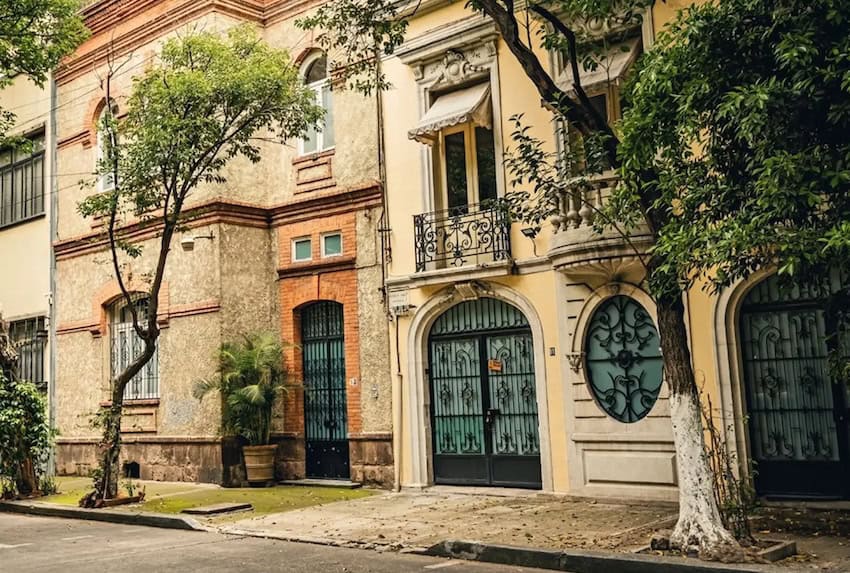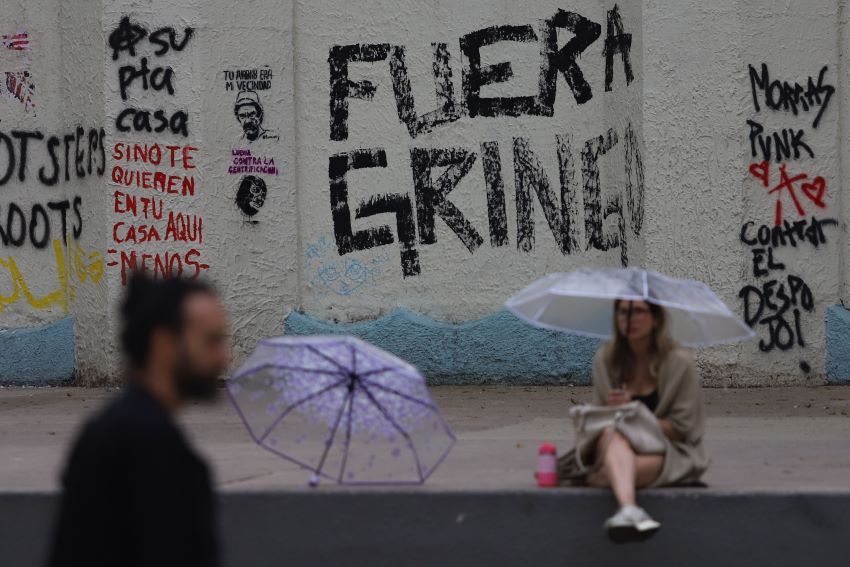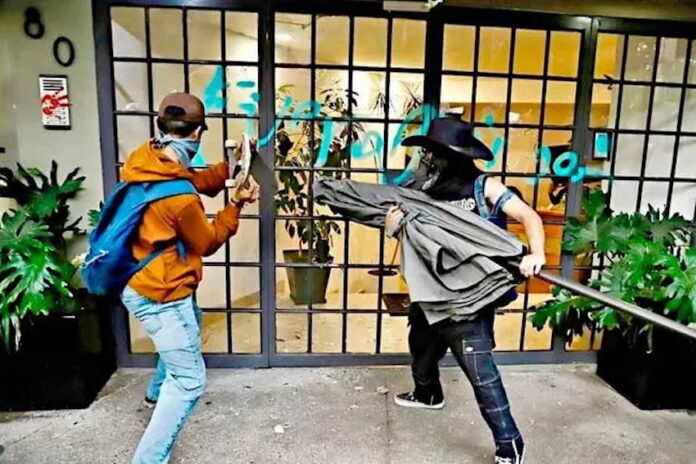I just finished reading Sarah De Vries’ essay on the anti-gentrification protests in Mexico City. While I appreciate how she addresses the issue, I couldn’t help but feel a lingering sense of disconnect. As a Mexican who lived in Roma Norte for 11 years, I believe her piece, though well-intentioned, overlooks a deep discomfort many of us feel.
This isn’t a rebuttal. I don’t claim to speak for all Mexicans. But I do want to offer another truth — one rooted in experience, memory and place.
Just how expensive has Mexico City become?
I still remember when The Economist’s global cost of living report was published in 2024. Mexico City ranked as the 16th most expensive city in the world — ahead of Milan, Munich and Washington, D.C. My friends and I stared at the screen, speechless. And then we laughed. Bitterly. Now we knew why our wallets felt like black holes where money disappeared, never to be seen again.
Sarah is right: foreigners don’t set the prices. This inflationary spiral has been fueled by policies, incentives and market decisions made by us Mexicans — particularly those in power.
Tourism was always the objective
The truth is, Mexico didn’t accidentally become a tourism magnet. It was a calculated move and part of a broader economic strategy that began during President Enrique Peña Nieto’s administration (2012–2018). The goal was to diversify our economy, shifting from a manufacturing-heavy model toward services and tourism.
The “Visit Mexico” campaign was everywhere: billboards in airports, glossy spreads in international travel magazines, glowing write-ups in art publications about how the city had become the “new Berlin.” Remember the opening scene from James Bond’s “Spectre,” set in the city’s historic center? It still makes me laugh that we now have an annual Day of the Dead parade inspired not by tradition, but by a James Bond movie.
We laid the groundwork. And now we’re reaping both the benefits and the consequences.

What does gentrification feel like?
My parents met in the early 1980s. At that time, suburban life was seen as the ultimate dream; with just a few years of hard work, one could afford a large home on a quiet street, creating an ideal environment for raising a family. I was born in 1990 and grew up in the south of Mexico City. I attended a private school, spent entire months on long family vacations and enjoyed a comfortable upper-middle-class suburban lifestyle. I was a “niña fresa.”
In 2008, I enrolled in Art History at Casa Lamm in La Roma, a neighborhood already undergoing gentrification at that time. To my parents, it was still a “barrio populachero” (a derogatory term for a working-class area), a far cry from the refined neighborhood they remembered before the 1985 earthquake completely leveled it. For them, my fondness for la Roma symbolized a descent into counterculture, as if I were auditioning for a role in a Kerouac or Burroughs novel.
In 2010, I found a tiny apartment on the corner of Jalapa and Álvaro Obregón. It was a 1970s building, poorly laid out but with a breathtaking view of Reforma’s skyline. Rent? 5,200 pesos, or around US $250 at the time. I rationalized it as a gas-saving strategy, though my parents were skeptical, of course. You’d have thought my sister and I had moved into one of the tenements from “Trainspotting.”
Those were golden years. Friends lived nearby in Condesa. We spent afternoons in cafés and libraries, haunted galleries and bookstores, drank mezcal in old cantinas where office workers, hipsters, artists and intellectuals mingled with a kind of bohemian ease. We felt part of something.

But by 2017, after the earthquake damaged my building, I had to move out.
When I tried to move back the following year, my landlord had turned the apartment into an Airbnb. The new monthly rate? 28,000 pesos, a shade less than US $1,400. Three times what I had been paying during my last year there.
Later, I found another place, on Puebla and Orizaba, and fell in love. One hundred and sixty square meters, two terraces, a dream kitchen, sunlit bathrooms. It cost 32,000 pesos (about US $1,600). I was ready to grow old there, but then came the pandemic. Six months without work and I had no choice but to leave.
The pandemic really marked a before and after in Mexico City’s dynamic. When I returned in 2021, my old apartment was listed at 42,000 pesos (US $2,100). Something had shifted. The neighborhood no longer felt like home.
Rents had exploded everywhere. Beloved buildings, like the iconic Balmori, saw prices triple. More foreigners arrived. My parents, once concerned, were now oddly reassured: the neighborhood looked better to them, more “whitexican” and cosmopolitan.
During the 11 years I lived in Roma, we didn’t just alter the demographics. We erased entire micro-economies, some of them operating since the 1950’s.
Hardware stores, shoemakers, corner bodegas, tailor shops, classic liquor and tobacco shops, tortillerías, fruit shops — all gone. They were replaced by bilingual cafés and curated restaurants, many backed by people like us: whitexicans with connections and capital, and a taste for aesthetic control. Gentrification didn’t descend on us. We caused it.
The protests were fuelled by xenophobia

Unlike Sarah, I didn’t see the “anti-gentrification protest” as a critique of capitalism or inequality. I saw it as something more visceral, more targeted. The majority of the signs didn’t read “Regulate Airbnb” or “Protect tenants’ rights.” They said:
- “Gringo go home.”
- “Kick out the gringo before he kicks you out.”
- “My city is NOT your Airbnb.”
- “Aquí se habla español.”
Why target Americans and not Spaniards, Germans, Argentinians or Colombians?
I think I know why. The perception — fair or not — is that particularly young Americans bring with them a certain kind of entitlement. They don’t try to communicate in Spanish, nor respect our culture, and treat the city like a party spot or a photo booth.
I don’t think this perception is accurate, but I have witnessed things that could be seen to support this.
In my apartment on Puebla, I lived across from an Airbnb that hosted a rotating cast of international visitors. Loud parties on weeknights were normal, and the visits of sex workers and drug dealers were occasional. That event that ended the building’s Airbnb era was a drug-fuelled rampage that culminated in the destruction of the furniture.
I haven’t seen it in a while, but there was a period when if you walked by Plaza Río de Janeiro, you would see a group of tourists sunbathing in bikinis. While they weren’t causing any harm, in a conservative country like ours, it felt disrespectful. Not criminal. Just off. Inappropriate.

Many of us are witnessing our neighborhood transform into something unrecognizable, not just in rent, but in spirit. Experiences like these create the fear that Mexico City will become “the next Tulum.” This fear might be totally misguided, but perception, as we know, can often outweigh reality.
Some friends — who now call me a “sellout”— have asked me in the Taste of Mexico videos we share on Instagram to stop promoting Mexico. I’ve fought with them and defended my work. Yet, I understand where the plea comes from.
I will always defend cultural exchange
Thanks to my multiple degrees in Art History, Journalism, and Sociology (I was unfocused as a student) I firmly believe that cultural exchange strengthens any society. Throughout history, I’ve seen how dedicated many foreigners are in their efforts to learn Spanish, integrate into our communities, show respect and gain a better understanding of this country than the average Mexican. Anita Brenner’s book “Idols Behind Altars” (1929) is one of many examples.
We, at Mexico News Daily and you, the audience, are living proof of the enormous effort and care that can be put into building this bridge between cultures.
So let me say this clearly: if you’ve been mistreated, insulted or made to feel unwelcome in these last few weeks, I’m sorry, not all Mexicans feel the same way. Sarah is right: fear often manifests as violence, but that will never be justification for xenophobia and violence.
These demonstrations — polarizing as they are — have struck a chord that will continue to resonate for some time. They reflect the growing tension points that define modern urban life: overpopulation, inequality, resistance to change, the fear of being displaced and the relentless precarization of, well, everything.
I was part of the first wave of gentrification. And so I find myself asking, not just as a citizen, but as an accomplice: How do you repair a community you fractured, without becoming patronizing or without offering cheap solutions and platitudes that might deepen the wound?
I believe that, like in any relationship, once you become invested, you start to care. This doesn’t mean that you have to agree on everything or always like each other — just ask anyone living with their partner. However, one thing is certain: you do not intentionally destroy or hurt what you truly love.
María Meléndez is a Mexico City food blogger and influencer.
